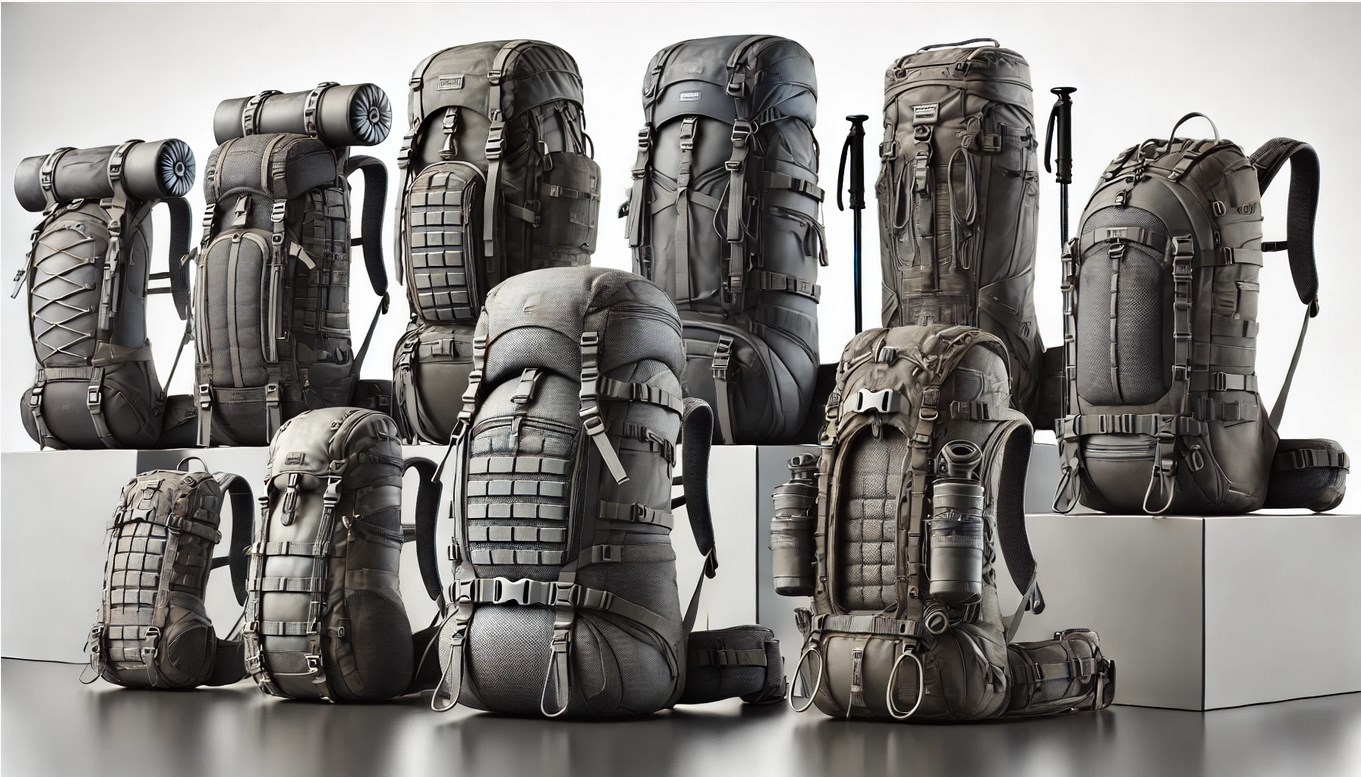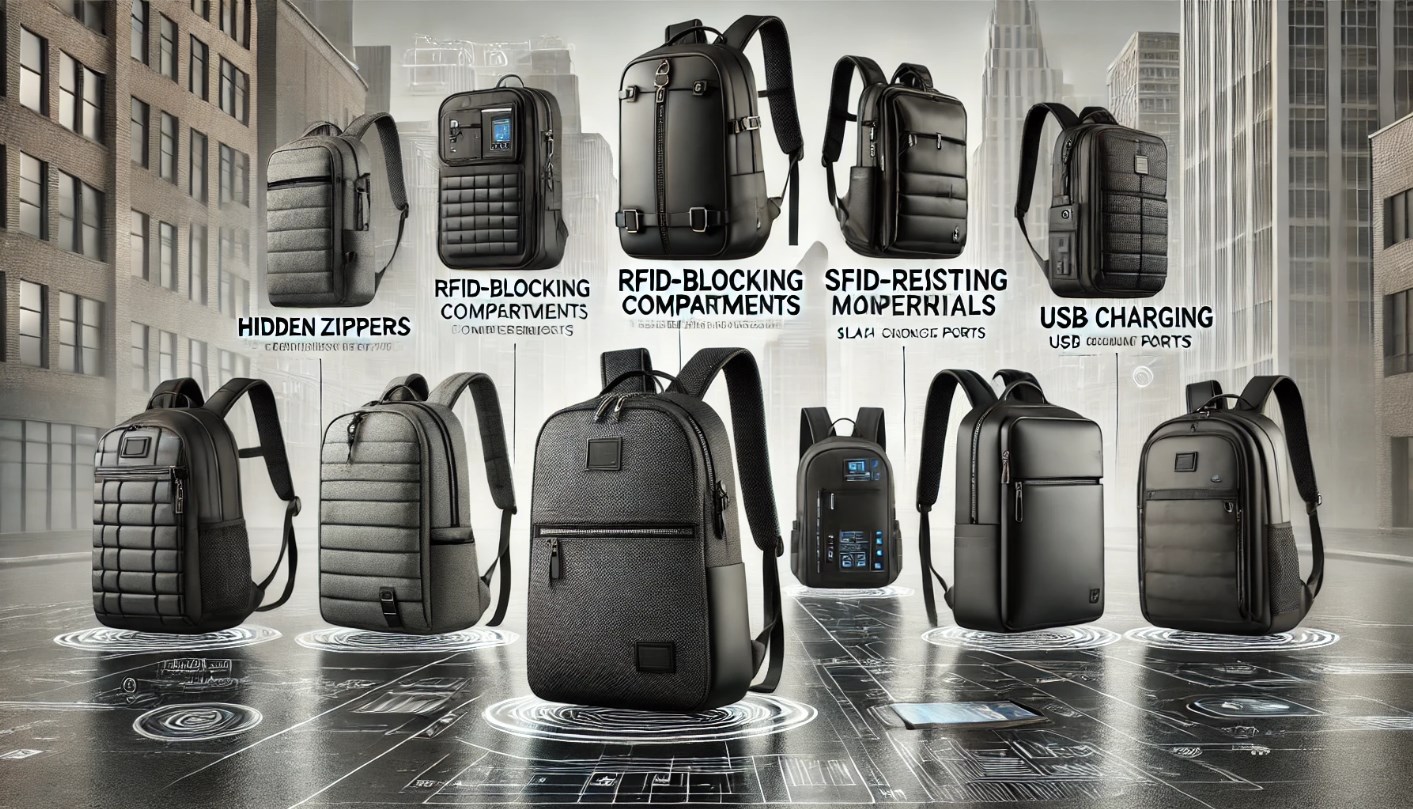A camera backpack is an essential accessory for photographers and videographers, designed to provide secure storage and easy access to camera gear while on the go. Whether you’re a casual hobbyist or a professional capturing photos in remote locations, choosing the right backpack can make a significant difference in both convenience and protection. With varying designs, features, and capacities, camera backpacks come in different types tailored to different needs and environments.
1. Traditional Camera Backpacks
Reliable and Spacious Storage
Traditional camera backpacks are the most common and widely used type of camera bags. These backpacks are designed with a large main compartment, multiple dividers, and various organizational pockets to hold your camera, lenses, accessories, and personal items.
- Design Features: These backpacks usually have a large, central storage area with customizable dividers to separate your camera gear. They also often feature external pockets for quick access to smaller items like memory cards, batteries, or cleaning supplies.
- Material: Traditional camera backpacks are often made of durable materials such as nylon, polyester, or canvas, providing excellent protection against light rain and abrasion. The zippers, buckles, and straps are usually made from high-quality plastic or metal for longevity.
- Accessibility: Some traditional backpacks offer side-access panels, allowing photographers to reach their gear quickly without taking off the entire pack. These backpacks often have top-loading access, making it easy to grab your camera gear while on the move.
Benefits of Traditional Camera Backpacks
- Versatile Storage: Traditional backpacks can accommodate a wide range of equipment, including DSLR cameras, mirrorless cameras, multiple lenses, flashes, tripods, and personal items like a laptop or tablet.
- Comfortable Carry: With adjustable padded shoulder straps, waist belts, and breathable mesh backs, traditional backpacks provide comfort for photographers who need to carry their gear for long hours.
- Organization: These backpacks provide plenty of room for organization, with custom dividers and additional compartments for easy access to accessories.
2. Sling Camera Backpacks
Compact and Quick Access
Sling camera backpacks are a hybrid between a backpack and a shoulder bag. These bags are designed for photographers who want quick access to their gear while keeping their hands free. Sling backpacks typically have a single strap that allows the bag to be slung over one shoulder, and they can be easily swung around to the front to access equipment without fully removing the pack.
- Design Features: Sling camera backpacks have a simple design with a single strap, allowing the bag to rest diagonally across the body. The main compartment is often smaller than traditional backpacks, but it’s designed to fit a DSLR or mirrorless camera, one or two lenses, and small accessories. Many models offer side access or a front panel that opens quickly.
- Material: Sling backpacks are made from lightweight, durable materials like nylon or canvas, ensuring that they are easy to carry and resistant to wear and tear.
- Accessibility: One of the key features of sling camera backpacks is their quick-access design. Photographers can swing the bag from their back to the front and retrieve their camera gear without removing the entire pack.
Benefits of Sling Camera Backpacks
- Fast Access: The single strap allows the backpack to rotate around the body, providing quick access to your gear without needing to take the bag off.
- Compact Design: Sling backpacks are ideal for photographers who want a lightweight and minimalistic option without compromising on storage for their essential gear.
- Comfortable for Short Trips: Since sling backpacks typically have a single strap, they are most comfortable for short periods of use or light gear. They’re excellent for street photographers or nature walks where you need to quickly grab your camera.
3. Hiking Camera Backpacks
Designed for Outdoor Adventures
Hiking camera backpacks are specifically designed for photographers who venture into the wilderness, capturing landscapes, wildlife, or action shots. These backpacks combine all the features of a traditional camera backpack but with additional support for hiking trips, including more room for water bottles, snacks, and extra layers of clothing.
- Design Features: Hiking camera backpacks feature a well-padded, adjustable harness system, including a hip belt and chest straps for maximum comfort during long treks. These backpacks typically offer a larger storage capacity, often with multiple compartments for camera gear, clothing, food, and hydration systems like water bladders.
- Material: These backpacks are made from weather-resistant materials such as nylon or ripstop fabrics, ensuring protection from rain, dirt, and abrasion. The zippers and buckles are also designed to be durable enough to withstand tough outdoor conditions.
- Accessibility: Some hiking camera backpacks include side or back-access points for quick access to the camera, while others offer top access with a more secure, weatherproof opening. Many models also include built-in rain covers for extra protection in wet conditions.
Benefits of Hiking Camera Backpacks
- Comfort for Long Hikes: The adjustable harness system, breathable mesh backs, and hip belts help distribute weight evenly, making them ideal for long hikes.
- All-in-One Design: Hiking backpacks provide enough space not only for camera gear but also for essentials like food, water, and extra clothing, making them great for photographers who spend extended hours outdoors.
- Weather Protection: The use of durable, weather-resistant materials and rain covers ensures that your camera gear stays protected, even in harsh conditions.
4. Rolling Camera Backpacks
Easy Transport with Wheels
Rolling camera backpacks are designed for photographers who need to carry heavy equipment and want the option to roll their gear rather than carry it on their back. These backpacks typically have two or four wheels and a telescoping handle, allowing users to pull the backpack like a suitcase.
- Design Features: Rolling camera backpacks have a sturdy frame and a set of wheels located at the bottom of the bag. Many models include a padded, removable camera insert that organizes the gear within the backpack. The handle extends, allowing the backpack to be pulled along the ground.
- Material: These backpacks are made from durable materials, including nylon, polyester, or ballistic fabric, with reinforced corners and wheels for protection. Some models use hard shell exteriors for additional protection against impacts.
- Accessibility: Rolling backpacks often offer front or side access to camera gear. Some models also feature quick-access compartments for smaller accessories, such as batteries, memory cards, or a tripod.
Benefits of Rolling Camera Backpacks
- Ease of Transport: The wheels and telescoping handle make it easy to transport heavy gear without straining your back or shoulders, especially in airports or urban settings.
- Ideal for Heavy Loads: Rolling backpacks are excellent for photographers who carry a significant amount of gear, as they distribute weight more evenly and reduce physical strain.
- Versatile Use: While these backpacks are excellent for rolling on smooth surfaces, many models are also designed to be carried like a traditional backpack when needed.
5. Camera Backpacks with Laptop Compartments
Multi-Function for Work and Play
For photographers who need to travel with both camera gear and a laptop, camera backpacks with laptop compartments are the perfect solution. These backpacks are designed to securely store both your camera equipment and a laptop or tablet, making them an excellent choice for professional photographers who need to edit photos or manage business tasks while on the go.
- Design Features: These backpacks offer separate compartments for camera gear and electronics. The laptop compartment is typically padded to prevent damage, while the camera section features dividers and padding to keep your gear safe.
- Material: Camera backpacks with laptop compartments are usually made from high-quality, water-resistant materials such as ballistic nylon, making them durable enough for travel while offering protection against the elements.
- Accessibility: These backpacks are designed for both comfort and convenience. They often include quick-access zippers for cameras, with secure compartments for electronics and other personal items.
Benefits of Camera Backpacks with Laptop Compartments
- Convenient for Work and Travel: These backpacks allow photographers to carry both their camera gear and laptops in one bag, making them ideal for business trips or long travels.
- Well-Organized: With designated sections for both cameras and electronics, these backpacks help keep your equipment organized and easy to access.
- Security for Expensive Gear: The padded laptop compartment and additional organizational pockets ensure that both your camera gear and electronics remain safe during transport.
6. Compact Camera Backpacks
Lightweight and Efficient
Compact camera backpacks are designed for photographers who prefer a lighter, more minimalist approach. These backpacks are ideal for photographers who need to carry only essential gear and want a lightweight bag that won’t weigh them down.
- Design Features: Compact camera backpacks have a small, streamlined design with enough space for a DSLR or mirrorless camera, a lens, and a few small accessories. These backpacks often have fewer compartments but are still designed for easy organization.
- Material: Compact backpacks are typically made from lightweight materials like nylon or polyester, which provide durability without adding unnecessary weight. The zippers and straps are often designed to be simple but sturdy.
- Accessibility: While compact backpacks may not have as many access points as larger bags, they often feature quick-access side zippers or a top flap to reach your gear.
Benefits of Compact Camera Backpacks
- Lightweight: These backpacks are designed for photographers who don’t need to carry a lot of gear but still want to protect their essentials.
- Minimalist Design: The simple design makes compact backpacks ideal for casual photographers or travelers who want to carry just the essentials without a bulky bag.
- Ease of Mobility: Due to their smaller size, compact backpacks are easier to maneuver through crowds and tight spaces, making them a good choice for street photographers or urban explorers.
7. Camera Backpack with Camera Insert
Customizable Protection
Some camera backpacks come with a removable camera insert or modular compartments, providing a customizable setup based on the photographer’s needs. These backpacks are designed for those who want more flexibility in organizing their gear.
- Design Features: These backpacks come with a modular system that allows you to adjust the internal dividers or remove the insert entirely. This provides greater customization and flexibility for carrying various types of camera gear.
- Material: Camera backpacks with inserts are made from durable, water-resistant materials, often featuring heavy-duty zippers and padding for extra protection.
- Accessibility: Depending on the model, these backpacks may offer top, side, or back access to the camera gear, with additional compartments for personal items or accessories.
Benefits of Camera Backpacks with Camera Inserts
- Customizable Organization: The removable or adjustable inserts allow photographers to tailor the internal organization to suit their specific gear needs.
- Versatility: These backpacks can accommodate different types of gear and can be reconfigured for different types of shoots, making them ideal for photographers with changing equipment.
- Additional Protection: The camera inserts often come with extra padding and secure compartments to protect valuable camera equipment.






